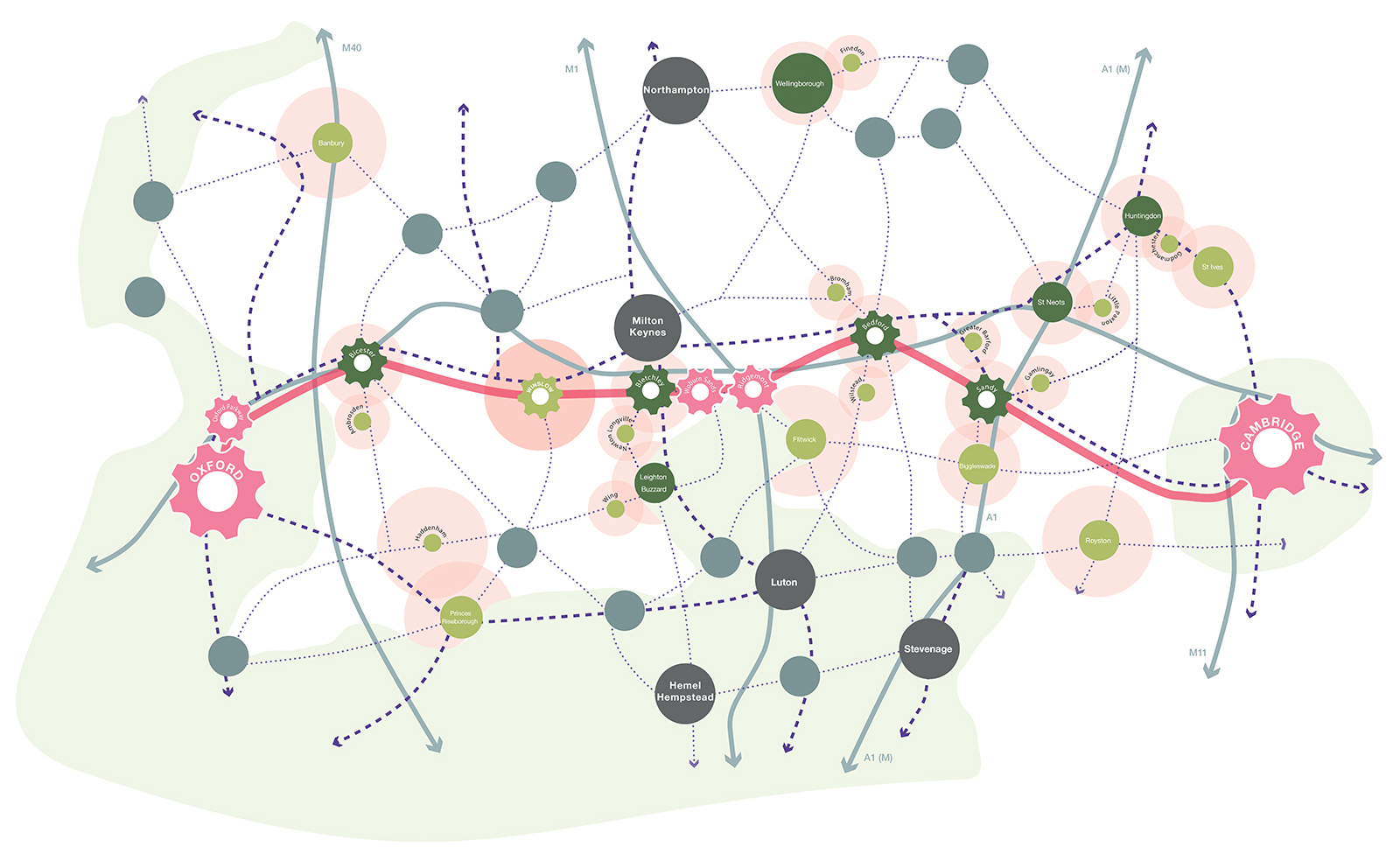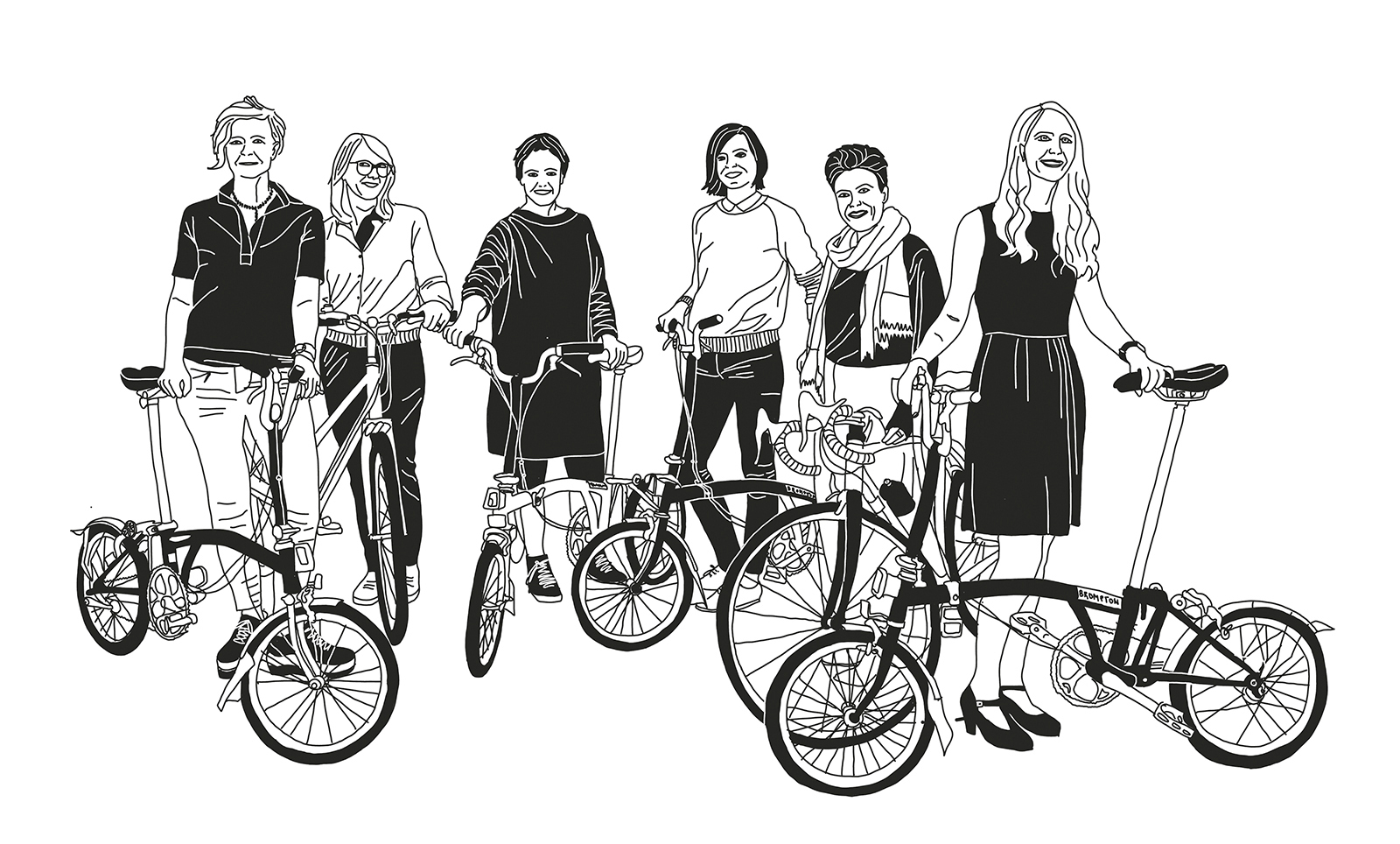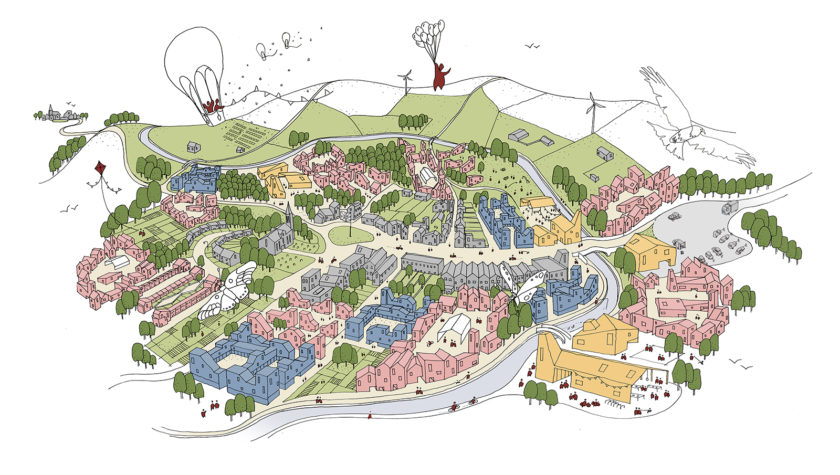In a discussion after a recent talk I gave about the VeloCity project at Museum of Architecture, someone in the audience asked: “How can you [architects] be so positive against all the odds? Surely the odds are just too great – so why even bother?”
The odds against VeloCity – the winning strategy in the Commission’s Cambridge to Oxford Growth Arc competition (which will feature in an exhibition on the Arc hosted by the Transport Systems Catapult) – are very high. The project challenges ideas of how we plan for the future of the countryside; it challenges more rigid forms of collaboration; and ultimately, proposed by an all-female team (see below), challenges the notion of infrastructure being a predominately ‘manly’ subject.
So, what is the idea behind VeloCity? Our framework proposes densification of villages along the Cambridge to Oxford corridor and incentivises cycling, walking and public transport as the mainstream form of movement with the aim to fundamentally re-shape the way places are planned and how people communicate and relate to one another. Ultimately, it is about people, place and how to enable a positive process of change.
We know the odds of people in the countryside giving up their cars today are close to nil. But in 2050? We believe that if we make the decision today and plan a ‘roadmap’ how to get there, ultimately we can achieve this ambitious vision. Prior to the 2006 Health Act, which lead to a smoking ban in enclosed work places in the entire UK, few people would have believed that smoking in pubs would become a thing of the past. The same way that cigarettes and pubs were inseparable then, countryside and cars are still today.
When we got together as a team and read the competition brief, we consciously chose to look at the less obvious. By proposing to densify villages as a complementary strategy to densification of cities, which we calculated could potentially deliver up to 40% of the one million new homes needed in the region by 2050, we have engaged the untouchable nostalgic image of the picturesque English countryside engrained in people’s minds.

The truth is, this picturesque countryside is facing a lot of issues – from an ageing and unhealthy population through to lack of services and unaffordable housing which further detracts young families and economic activity away from these places.
To tackle these issues head on is not possible without a positive outlook. So, the question from the audience made me think, why indeed do we bother?
Years ago I interviewed architect-developer Roger Zogolovitch for my book about the future of architecture profession. He described architecture as an imagining of the future. Its future focused and propositional nature demands an inherently positive outlook. It is about influencing change, and change is a powerful motivator. It is the thrill of ‘being part of something bigger than ourselves’, a theory brilliantly captured in Dan Pink’s book Drive – The Surprising Truth About What Motivates Us.
I am sure there are still many ‘odds’ to overcome, but the overwhelmingly positive reactions to VeloCity keep us going. Since winning the competition, we have been invited to speak at numerous events and were approached by various institutions and public as well as private sector clients who were inspired by our vision. Recently VeloCity received recognition overseas, getting an award at the International Making Cities Livable Conference in Ottawa, Canada.
Step by step, our discussions are moving beyond ideas into implementation scenarios.
For me as an architect and urban practitioner, this is really exciting ground. When we set up Marko&Placemakers in 2013, we did this with a mission to integrate people-oriented design approach to strategic processes that shape our cities. These early stages of decision making impact on how places will evolve for years to come, and as architects we want to reclaim this territory.
The opportunity to influence high-level decision-making also led me to apply to become a member of the Commission’s Young Professionals Panel. The mission of the newly formed interdisciplinary panel is to bring fresh ideas and ensure a strong voice for the next generation of infrastructure leaders for the country. After the first informal meeting this week it is energising to see that our group of 16 is determined to make an impact and I look forward to the challenges this role will bring.
Petra Marko is Co-Founder of Marko&Placemakers and a member of NIC Young Professionals Panel
VeloCity is a collaboration between Petra Marko (Marko&Placemakers), Jennifer Ross (Tibbalds Planning & Urban Design), Sarah Featherstone (Featherstone Young), Annalie Riches (Mikhail Riches), Kay Hughes (Khaa) and Judith Sykes (Expedition Engineering)





